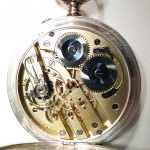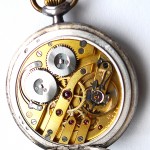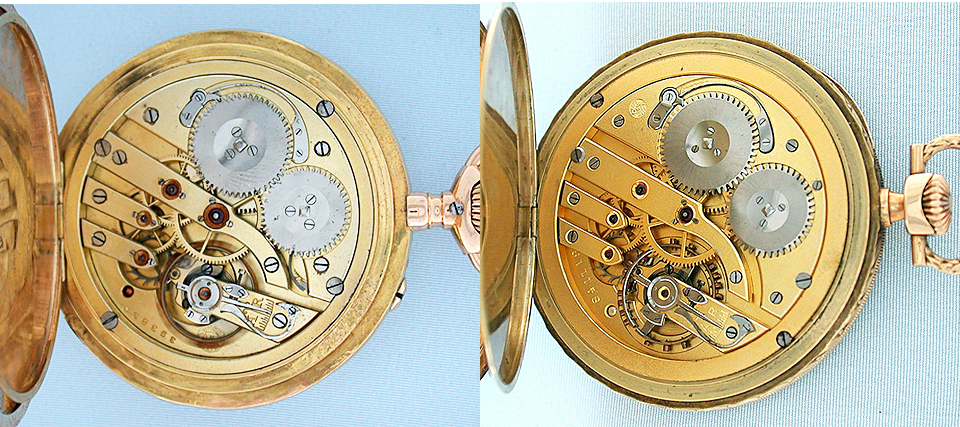Most IWC early pocket watch movements had relatively large or wide bridges (or, technically, cocks if affixed on one end only). To produce thinner pocket watches, IWC also produced pocket watches with long, thin bridges or cocks, which are called “finger bridge” movements.
The first IWC finger bridge movement was the Lépine Calibre 65, and its companion Savonette Calibre 66, both of which are known as “Lutetia” movements. Together these were produced in 38,740 examples between 1893 and 1930. Each had 16 jewels, beat at 18,000 half-beats per hour and were 41 mm (18 ligne) wide.
Additionally, a very rare IWC finger bridge movement was Caliber 69. At 4.7 mm in height and 16 lignes in diameter, this finger bridge Lépine movement was launched in 1898. Only about 2,100 were produced.
A resizing of the design in 1913 produced Calibres 73 (Lépine) and 74 (Savonette). Slightly smaller at 38 mm or 16 3/4 ligne, these also had 16 jewels but the balance was upgraded from monometallic with screws, as used in the Calibres 65 and 66, to bimetallic with screws. Reportedly, 52,500 examples of the Calibre 73 movement were made from 1913 to 1930, and another 15,000 of the Calibre 74 were produced from 1913 to 1931.
Calibre 73 and 74 pocket watches often are easily identifiable from the dial and case, without even viewing the distinctive finger bridge movement. Frequently as products of the 1920s, they often had Art Deco style dials with stylized numerals. The relatively thin cases often had striped engravings or Grecian motifs on the bezel area, sometimes filled with enamel.
Being relatively thin for a full-sized pocket watch movement, Calibre 74 was also used in IWC’s first wristwatch that used a pocket watch movement, the famous Portuguese wristwatch (reference 325). 304 Calibre 74 movements were used in the Portuguese wristwatches between 1939 and 1952.
A classic example of a Calibre 65 from the 1890s is shown here, showing the thin bridges. The jewels are set in chatons and there is fine regulation.
This is a very late example of a Caloibtre 65T from 1927. With the “T” designation the watch is wind but simply raising the crown, and the pusher is omitted. Also, all of the jewels (except the center one) are no longer set in chatons, since the technology for construction of jewel setting had improved.
This image shows the few differences between a Calibre 66 and the revised Calibre 73 –there is very little design change and it is not ready to distinguish them at first sight. The later Calibre 73 had fewer chatons, slightly thinner bridges and a different balance.




